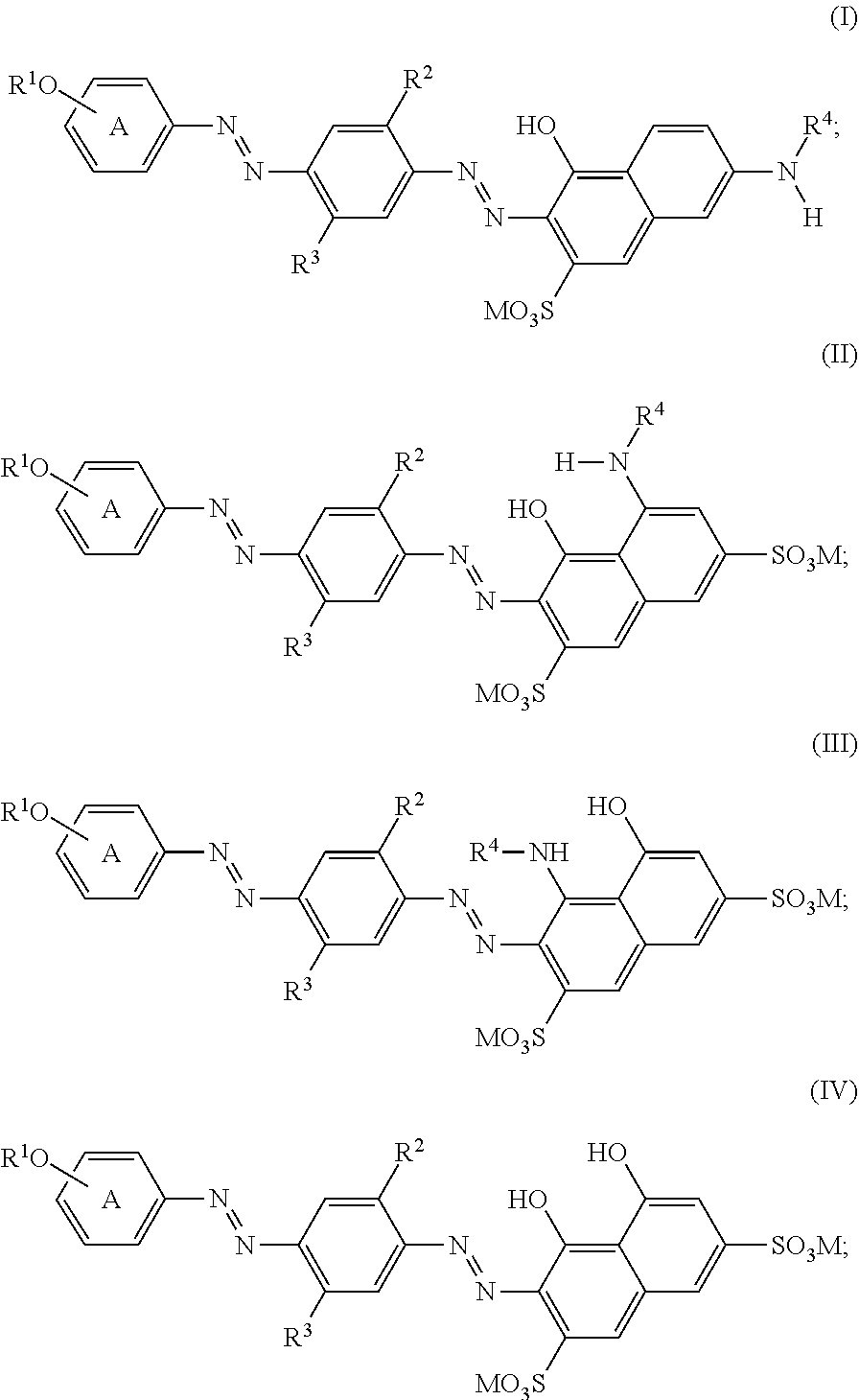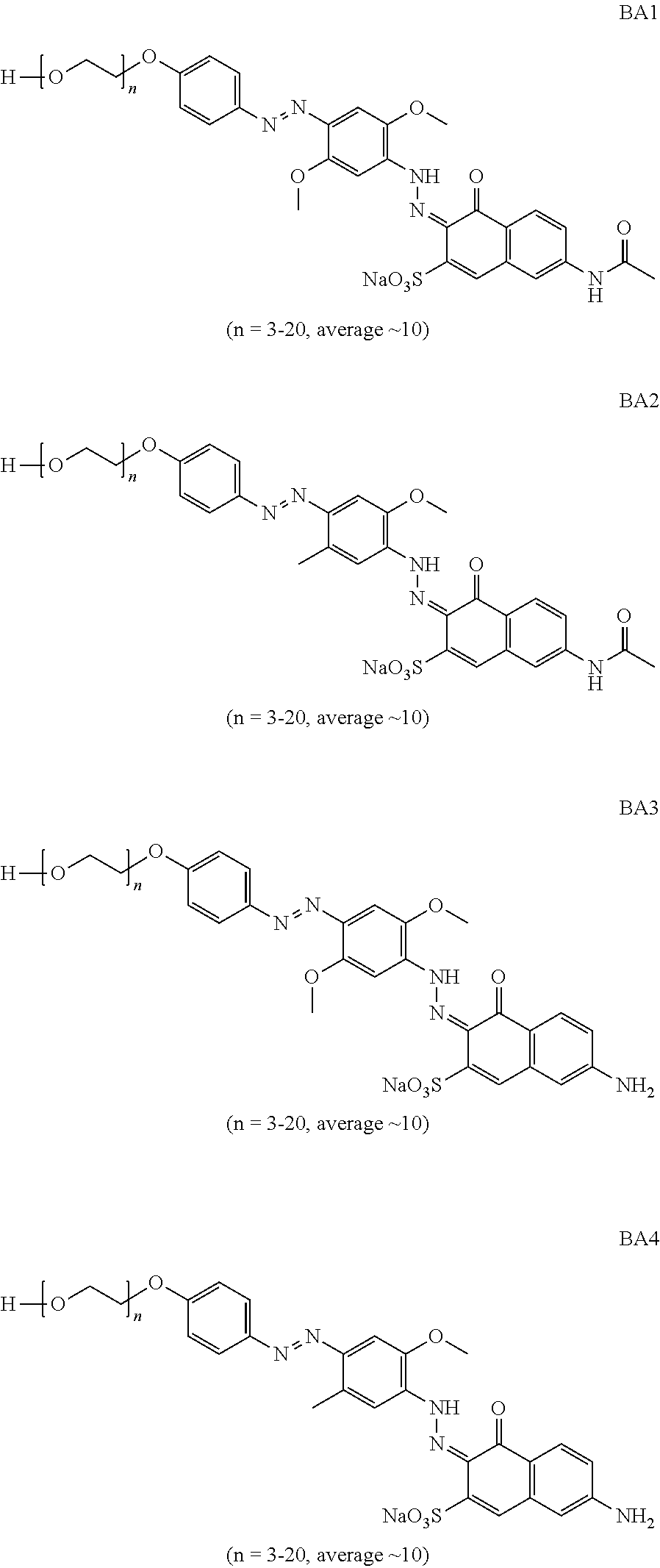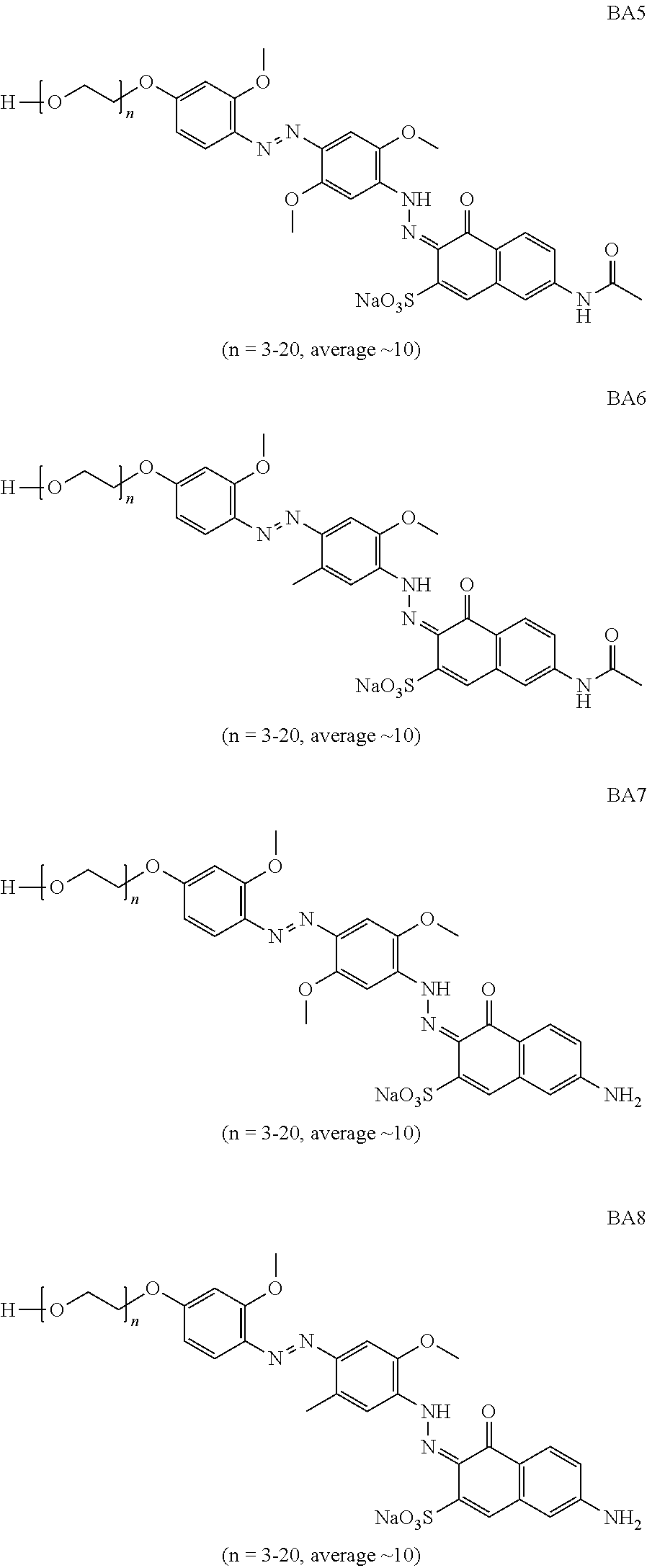Bis-Azo Colorants For Use As Bluing Agents
a technology of bisazo colorants and bluing agents, which is applied in the direction of detergent dyes, chemical instruments and processes, organic dyes, etc., can solve the problems of yellowing of treated situs over multiple treatment, undesirable blue discoloration, and difficulty in reversing by normal laundering procedures. , to achieve the effect of not building up over time and causing undesirable blue discoloration
- Summary
- Abstract
- Description
- Claims
- Application Information
AI Technical Summary
Benefits of technology
Problems solved by technology
Method used
Image
Examples
example 1
[0120]To a cold (0-5° C.) solution of p-polyalkyleneoxyphenylamine (27.45 grams in 100 ml of water), containing sufficient hydrochloric acid to give a pH of 1, are added 3.58 grams of sodium nitrite. The mixture is stirred for 2 hours. The mixture is then added to a cold solution of 7.65 grams of 2,5-dimethoxyaniline in dilute hydrochloric acid to give an orange colored product. This product is further diazotized by adding sufficient hydrochloric acid to keep the pH at 1 followed by 3.58 grams of sodium nitrite. After stirring 2 hours at 0-5° C., the mixture is added to an aqueous solution of 13.96 grams of N-acetyl J acid along with sufficient sodium hydroxide to dissolve the N-acetyl J acid. During the addition of the diazonium salt, the pH is kept at 10-12 by the addition of aqueous sodium hydroxide solution. This resulted in a violet colored product represented as Formula BA 1 herein.
[0121]B. Test Methods
[0122]I. Method for Determining Hueing Deposition (HD) for Dye from a Wash ...
performance example
[0133]The performance of nine different bis-azo bluing agents, three comparative and six inventive, are tested and Hueing Deposition, and Selectivity Ratio are assessed according to the equations disclosed above in the methods. The results are given in the Table immediately below.
Test Results
[0134]
SelectivityRatio(ΔECotton* / DyeΔECotton*ΔENylon*ΔENylon*)29.2419.361.51Direct Violet 9 (comparative)19.2614.911.29WO 2010 / 151906 A2, Formula BA63,n = 3-20, average ~ 10 (comparative)12.0321.150.57WO 2010 / 151906 A2, Formula BA61,Example 18 (comparative)19.815.323.72n = 3-20, average ~ 1024.576.583.73n = 3-20, average ~ 1024.574.335.67n = 3-20, average ~ 1023.073.796.09n = 3-20, average ~ 107.260.4914.8n = 3-20, average ~ 106.821.664.10n = 3-20, average ~ 10
[0135]All the dyes show some level of deposition on cotton and nylon, The Selectivity Ratio (SR) for the comparative bis-azo bluing agents lie within a range of 0.5 to about 1.5. Substituting an acetyl or H for the phenyl ring in N-phenyl ...
PUM
| Property | Measurement | Unit |
|---|---|---|
| absolute hue angle | aaaaa | aaaaa |
| absolute hue angle | aaaaa | aaaaa |
| absolute hue angle | aaaaa | aaaaa |
Abstract
Description
Claims
Application Information
 Login to View More
Login to View More - R&D
- Intellectual Property
- Life Sciences
- Materials
- Tech Scout
- Unparalleled Data Quality
- Higher Quality Content
- 60% Fewer Hallucinations
Browse by: Latest US Patents, China's latest patents, Technical Efficacy Thesaurus, Application Domain, Technology Topic, Popular Technical Reports.
© 2025 PatSnap. All rights reserved.Legal|Privacy policy|Modern Slavery Act Transparency Statement|Sitemap|About US| Contact US: help@patsnap.com



